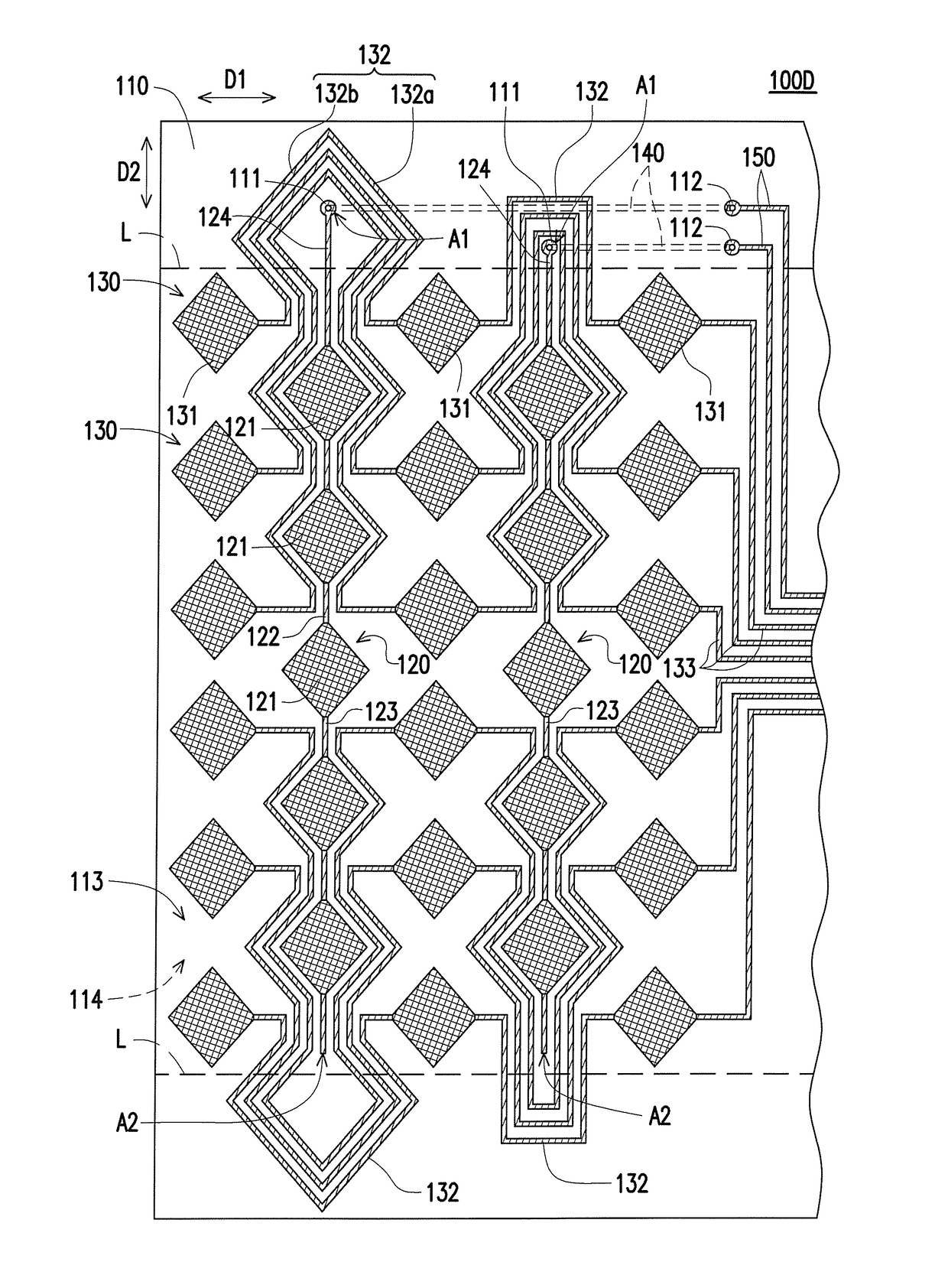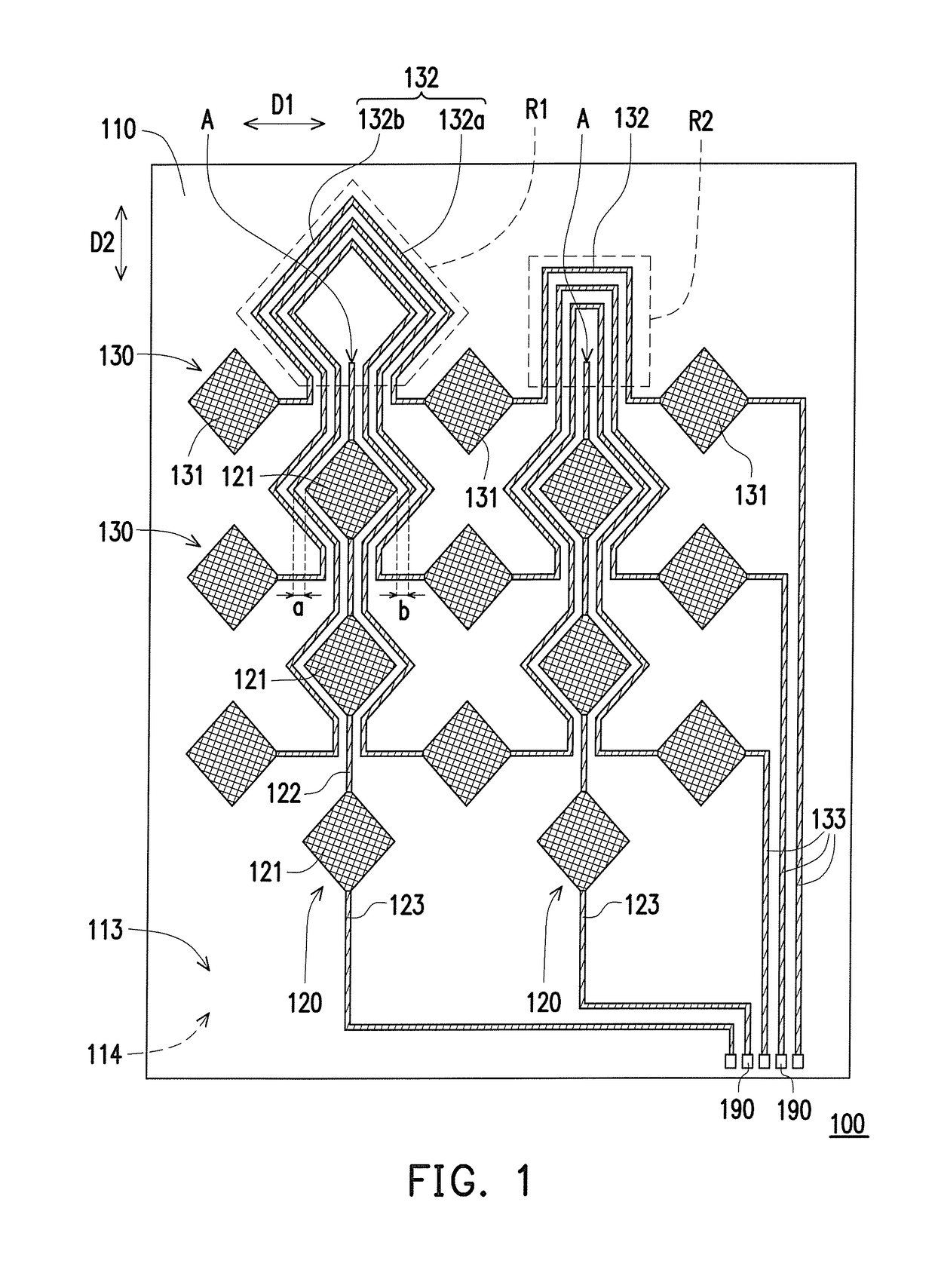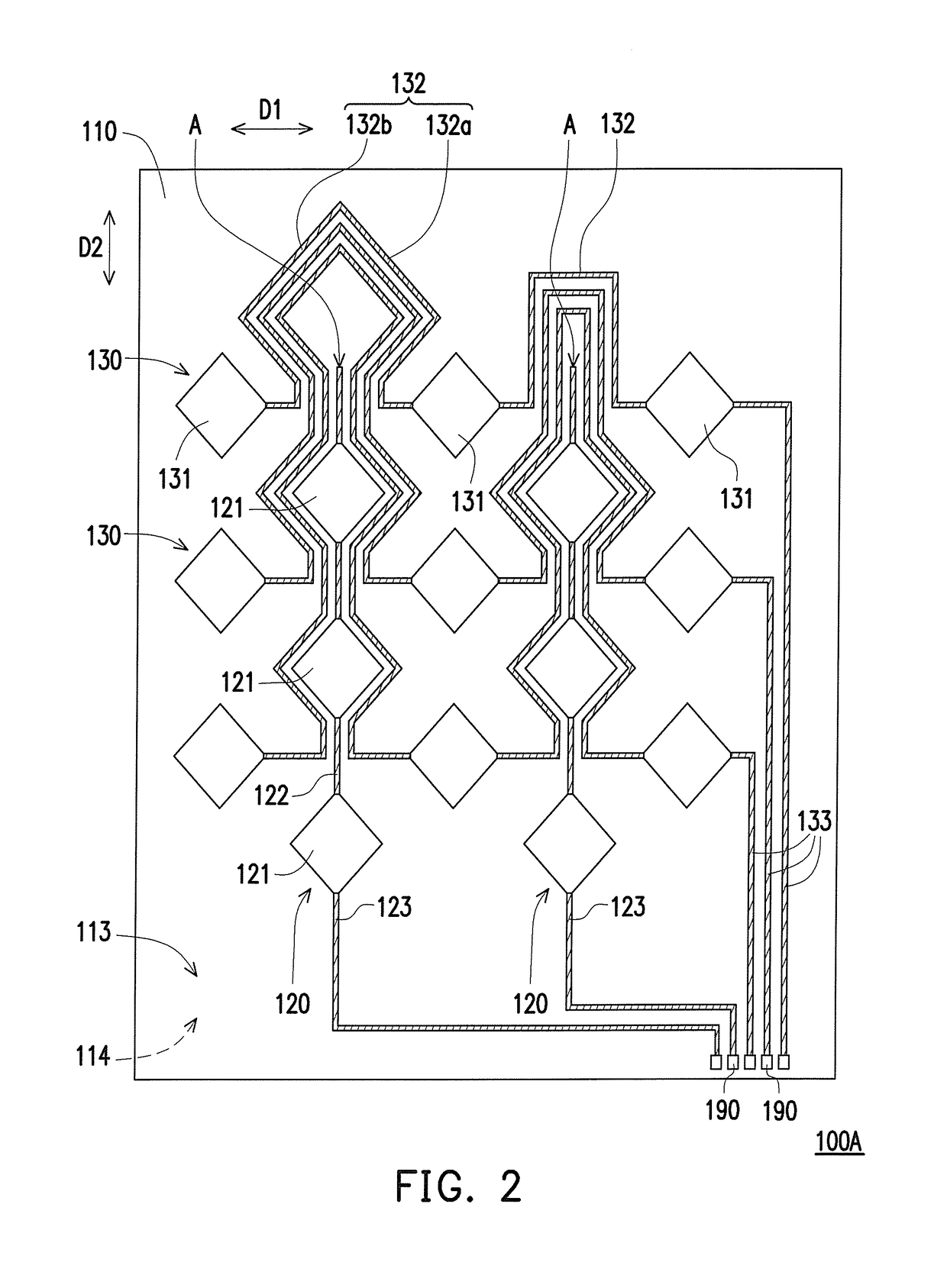Touch element and touch display module
- Summary
- Abstract
- Description
- Claims
- Application Information
AI Technical Summary
Benefits of technology
Problems solved by technology
Method used
Image
Examples
first embodiment
[0019]FIG. 1 is a top view illustrating a touch element according to the invention. Referring to FIG. 1, in this embodiment, a touch element 100 is a single-layer touch panel, for example. The touch element 100 includes a substrate 110, a plurality of first sensing series 120 separated from each other and a plurality of second sensing series 130 separated from each other, and the plurality of first sensing series 120 and the plurality of second sensing series 130 do not overlap with each other. The substrate 110 is a flexible substrate or a rigid substrate, for example, has a first surface 113 and a second surface 114 opposite to the first surface 113. In general, a material of the flexible substrate may include polyimide (PI), polyethylene terephthalate (PET), polyethylene naphthalate (PEN), polyether sulfone (PES), polymethyl methacrylate (PMMA), polycarbonate (PC), or metal foil. A material of the rigid substrate may include glass, quartz, or acrylics.
[0020]The first sensing seri...
second embodiment
[0026]FIG. 2 is a top view illustrating a touch element according to the invention. Referring to FIG. 2, a touch element 100A of FIG. 2 is substantially similar to the touch element 100 shown in FIG. 1, except for a difference that materials the first sensing pads 121 and the second sensing pads 131 of this embodiment may include transparent conductive oxide, such as ZnO, In2O3, SnO2, ITO, AZO, GZO, IGZO, or ZTO, and the materials of the bridging lines 122, the connection lines 132, and the wirings 123 and 133 may still include metal.
[0027]In other words, based on the manufacturing requirements, the first sensing pads and the second sensing pads of the touch element according to the embodiments of the invention may be formed of metal mesh or transparent conductive oxide. In general, the lines on the substrate are mostly formed of conductive metal or alloy. However, the invention is not limited thereto. In another embodiment, the materials of the first sensing pads 121, the second se...
fourth embodiment
[0032]FIG. 4 is a top view illustrating a touch element according to the invention. Referring to FIG. 4, a touch element 100C shown in FIG. 4 is substantially similar to the touch element 100, except for a difference that the touch element 100C further includes a flexible circuit board 160. The flexible circuit board 160 is disposed on the first surface 113 of the substrate 110. Namely, the flexible circuit board 160 is disposed on a side of the substrate 110 where the first sensing series 120 and the second sensing series 130 are disposed.
[0033]More specifically, the flexible circuit board 160 is located at terminals of the first sensing series 120, and is directly attached to the substrate 110. A patterned circuit 180 is disposed on the flexible circuit board 160. In addition, the flexible circuit board 160 is attached to the first surface 113 of the substrate 110 with a side where the patterned circuit 180 is disposed, for example. In this way, the patterned circuit 180 is electr...
PUM
 Login to View More
Login to View More Abstract
Description
Claims
Application Information
 Login to View More
Login to View More - R&D
- Intellectual Property
- Life Sciences
- Materials
- Tech Scout
- Unparalleled Data Quality
- Higher Quality Content
- 60% Fewer Hallucinations
Browse by: Latest US Patents, China's latest patents, Technical Efficacy Thesaurus, Application Domain, Technology Topic, Popular Technical Reports.
© 2025 PatSnap. All rights reserved.Legal|Privacy policy|Modern Slavery Act Transparency Statement|Sitemap|About US| Contact US: help@patsnap.com



